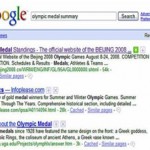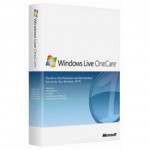 New York — Striving to bring to light every hidden treasure to the fore, Google Inc. today announced that it has opened one of the largest collections of 10 million historic photos and digitized images from the Life magazine archives in the world that dates back to the 1880s through to the seminal moments of the 20th century and on into the present day was made available to the public online yesterday.
New York — Striving to bring to light every hidden treasure to the fore, Google Inc. today announced that it has opened one of the largest collections of 10 million historic photos and digitized images from the Life magazine archives in the world that dates back to the 1880s through to the seminal moments of the 20th century and on into the present day was made available to the public online yesterday.
The new service, called Life images, and many has not been published, — will be stored in Google Image Search at http://images.google.com/hosted/life, debuted Tuesday with only a small percentage of the images — including newly digitized images from photos and etchings — have even been published, Google said in a blog post.
The remaining has been “lying in dusty archives in the form of negatives, slides, glass plates, etchings, and prints,” Google said. Ultimately, Google plans to scan all 10 million photos from Life’s library so they can be viewed on any computer with an Internet connection.
The magnitude of the archive is from Life magazine, the premier platform for photojournalists in the 20th century. About 10m images will eventually be available, from Marilyn Monroe and JFK to Barack Obama and Hillary Clinton.
Google yesterday said it had made a deal with Life to put their pictures online. Also available is work from other archives, much of it collected by the former Time publisher Henry Luce.
“This effort to bring offline images online was inspired by our mission to organize the entire world’s information and make it universally accessible and useful,” according to Google. We are digitizing them so that everyone can easily experience these fascinating moments in time.”
The announcement was made in the midst of an ambitious Google effort to add offline content like newspaper archives to its site. In September, it launched an effort to digitize millions of pages of news archives, making millions of old newspaper articles accessible and searchable online. Google has also been digitizing books since 2006.
The collection includes the entire works of Life photographers Alfred Eisenstaedt, Gjon Mili and Nina Leen. Also available are: the Zapruder film of the Kennedy assassination; Dahlstrom glass plates of New York from the 1880s; and Hugo Jaeger Nazi-era Germany 1937-1944.
RJ Pittman, the director of product management at Google, said: “We are very excited to bring this amazing collection of photos and etchings from the archives to the internet. With so many never before seen images, this is going to be a real benefit to the public.”
Google said that so far, about 20% of the Life photo collection is online. The rest of the magazine’s entire archive — 10 million photos — will be accessible over the next few months. The site now offers access to Life photos of the 1930s oil boom, the 1939 World’s Fair in New York, the 1963 March on Washington, the Vietnam War, Franklin D. Roosevelt, Jacqueline Kennedy, Marilyn Monroe and other subjects.
Dawn Bridges, a spokeswoman for TimeInc, said that the archives in their entirety would be available in the first quarter of next year. She said it would not just be historical.
“We will be adding new things. There will be thousands of new pictures from DC for the inauguration on January 20,” she said.
Life magazine is defunct but lives on the internet as Life.com.
The photos can be printed out for free as long as they are not being used as part of an attempt to make money. Time Warner Inc., Life’s parent company, hopes to make money by selling high-resolution, framed prints. The orders will be processed through Qoop.com.


